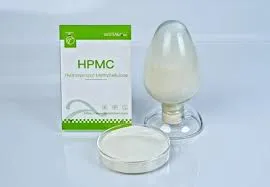
Dec . 18, 2024 10:26 Back to list
Suppliers of Hydroxyethyl Cellulose for Diverse Industrial Applications and Product Development
Hydroxyethyl Cellulose Suppliers A Comprehensive Guide
Hydroxyethyl cellulose (HEC) is a non-ionic, water-soluble polymer derived from cellulose. It has become increasingly important in various industries, including pharmaceuticals, personal care products, construction, and food processing. The material’s versatility, ease of use, and unique properties—such as viscosity modulation and film-forming capabilities—make it a sought-after component. This article delves into the role of hydroxyethyl cellulose suppliers, their significance in the supply chain, and the various applications of HEC.
The Importance of HEC
Hydroxyethyl cellulose has gained popularity due to its ability to improve the texture and stability of formulations. In the pharmaceutical sector, it acts as a binder, thickener, and stabilizing agent in tablets and gels, ensuring the effective delivery of active ingredients. In personal care formulations, HEC contributes to the texture of creams, lotions, shampoos, and other cosmetic products, enhancing their aesthetic appeal and usability.
In the construction industry, HEC is utilized in cement-based construction materials to enhance performance and workability. It improves water retention, which in turn enhances the strength and durability of the final product. In food processing, HEC serves as a food additive, imparting desirable properties such as thickening and stabilizing to various food products.
Key Characteristics of HEC
The properties of hydroxyethyl cellulose vary according to its degree of polymerization and degree of substitution. The solubility of HEC in water is a key characteristic, making it suitable for a broad range of applications. In aqueous solutions, it forms a gel-like consistency, enabling it to be tailored for specific requirements. Additionally, HEC is stable across a wide pH range, further enhancing its utility in different formulations.
Moreover, HEC is regarded as safe for use in food and pharmaceutical products, aligning with increasing consumer demand for transparency and safety in product ingredients. This safety profile allows suppliers to confidently provide HEC for various applications, contributing to market growth.
The Role of Suppliers
Suppliers of hydroxyethyl cellulose play a crucial role in ensuring the availability of this essential ingredient. They specialize in manufacturing and distributing HEC, often producing it in various grades to cater to the specific needs of different industries. The primary responsibilities of these suppliers include
hydroxyethyl cellulose suppliers

1. Sourcing Raw Materials Quality HEC begins with high-purity cellulose sources. Suppliers must ensure the procurement of raw materials that meet quality standards, which is critical for the performance of the final product.
2. Manufacturing Processes Suppliers utilize advanced processing techniques to produce HEC with the desired physical and chemical properties. The ability to control the degree of substitution and viscosity is essential for meeting client specifications.
3. Quality Assurance Reliable suppliers conduct rigorous quality control measures to ensure that their products meet industry standards, including certifications for safety and efficacy. This builds trust and rapport with clients.
4. Technical Support Many suppliers offer technical support, assisting clients in formulating their products. This includes providing guidance on optimal usage levels, compatibility with other ingredients, and process integration.
5. Sustainability Practices As sustainability becomes a pressing global concern, many suppliers are adapting their practices to reduce their environmental impact. This includes using sustainably sourced materials and optimizing production processes to minimize waste.
Choosing the Right Supplier
When selecting a hydroxyethyl cellulose supplier, several factors should be considered. Quality is paramount; thus, suppliers should provide documentation of their quality assurance processes and certifications. Additionally, the supplier's ability to meet deadlines and provide reliable delivery is essential for maintaining production schedules.
Technical expertise is another critical consideration. Suppliers who understand the intricacies of various applications can offer better guidance to clients and facilitate the development of high-quality formulations. Furthermore, evaluating a supplier’s commitment to sustainability can help companies align their sourcing practices with broader environmental goals.
Conclusion
Hydroxyethyl cellulose is a valuable ingredient across various industries, and the role of suppliers in ensuring its availability and quality cannot be overstated. By understanding the characteristics of HEC, the importance of suppliers, and key considerations for selecting the right one, companies can leverage this versatile polymer to enhance their products effectively. As industries continue to evolve, the demand for high-quality hydroxyethyl cellulose will remain strong, highlighting the need for reliable suppliers in the market.
-
Versatile Hpmc Uses in Different Industries
NewsJun.19,2025
-
Redispersible Powder's Role in Enhancing Durability of Construction Products
NewsJun.19,2025
-
Hydroxyethyl Cellulose Applications Driving Green Industrial Processes
NewsJun.19,2025
-
Exploring Different Redispersible Polymer Powder
NewsJun.19,2025
-
Choosing the Right Mortar Bonding Agent
NewsJun.19,2025
-
Applications and Significance of China Hpmc in Modern Industries
NewsJun.19,2025







